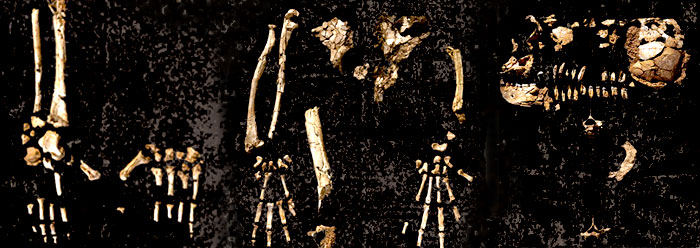
Are Humans Evolving? Depends on Your Definition.
Observable change is happening in humans, albeit slowly and only for certain traits. Scientists have tracked the histories of 14,000 residents of Framingham, Massachusetts, since 1948. Data from 2,238 females participating in the Framingham Heart Study were recently analyzed, including weight, blood pressure, cholesterol levels, and number of offspring.

Anthropologist Says Ancestors Were Faster Than Modern Olympians
Some evolutionists tend to believe that humans are continually improving―getting more robust, smarter, and faster. However, science increasingly indicates that the opposite is occurring.

Did Humans Evolve from 'Ardi'?
Ardipithecus ramidus is an extinct primate whose fossilized remains were first found along the Awash River in Ethiopia about fifteen years ago. Many fragments were collected, including shattered bones from a four-foot-tall female nicknamed "Ardi." She was chosen to represent her kind, apparently because of the comparative completeness of her remains.

Preadaptation: A Blow to Irreducible Complexity?
Molecular biologist Michael Behe described a system made of several interacting parts, whereby the removal of one part would disrupt the functioning of the whole, as irreducibly complex. Both creation scientists and intelligent design proponents highlight examples of irreducible complexity in their studies.

Rainforest Fossils Demonstrate Dramatic Climate Change
Researchers are recovering beautiful fossils from the Cerrejón Formation of Colombia. One was a giant snake, called the “Titanoboa.” Most recently, a study examined the formation’s fossilized flora, which looked the same as modern plants, and the rainforest environment in which they lived.1 This research dovetails nicely with other studies on ancient earth’s turbulent climate.








